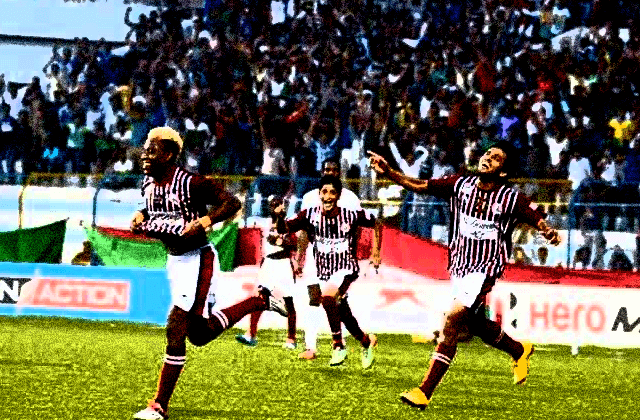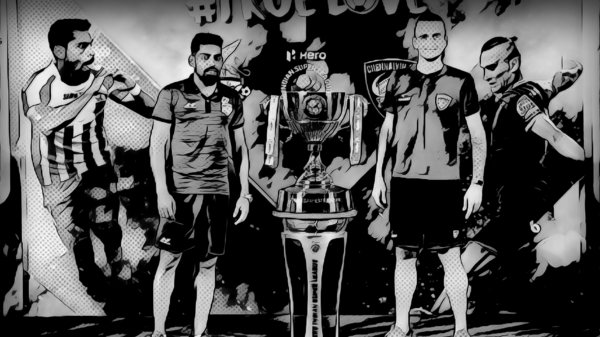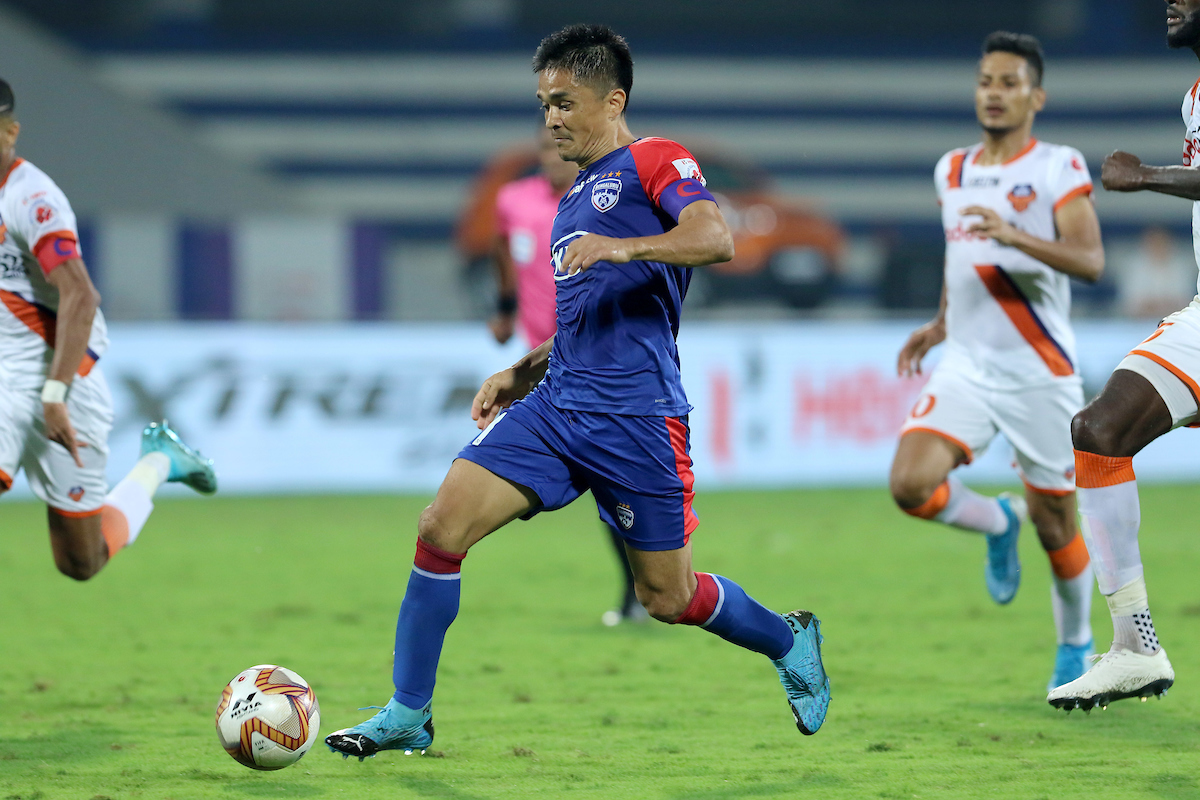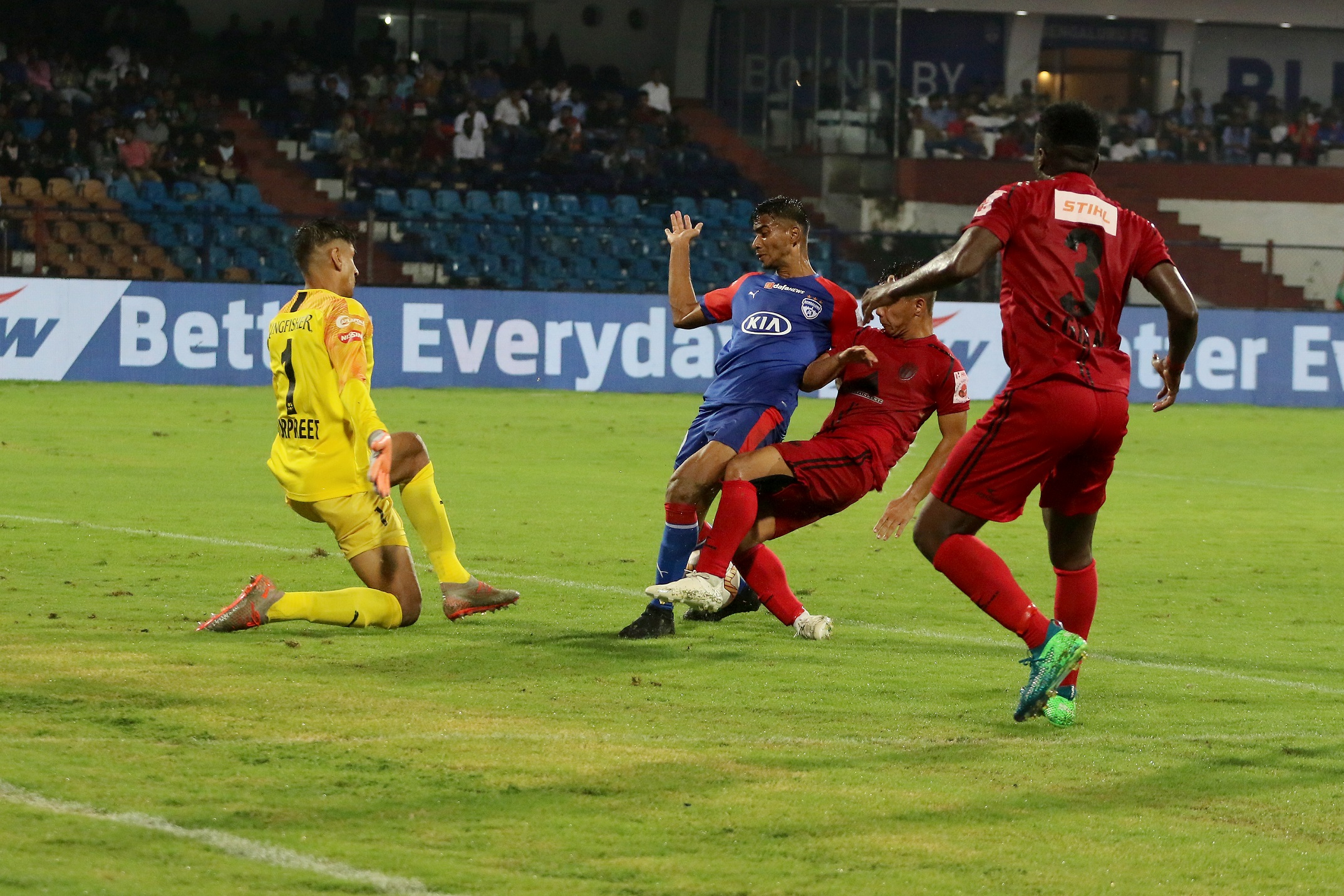21,786. After a thrilling denouement in the I-League which saw Mohun Bagan claw the title away from defending Champions Bengaluru FC, this was the number on everyone’s lips. The media had been generous in terms of column inches ahead of the game, the loyal local fans rounded up their friends, acquaintances and everyone in between, Mohun Bagan supporters rallied supporters based in the South Indian city and called upon reinforcements from Kolkata. The number that quantified the collective effort proved to be 21,786.

On the face of it, a crowd of 21,786 with a sizeable away contingent for a top-flight game is nothing remarkable. Consider the fact that the game was a virtual final and a little more of the sheen around the number wears off and yet such is the general apathy towards the I-League that the number is a notable achievement. There are plenty of aberrations with the historic Kolkata derby between Mohun Bagan and East Bengal regularly drawing tens of thousands of spectators but much of the I-League is played in front of desolately empty stands. Bengaluru FC have built a loyal, and loud, fan base in their two years of existence but even they’ve struggled to completely fill the Sree Kanteerava Stadium. Given the circumstances, drawing more than 20,000 spectators to the stadium is a laudable achievement, as it was rightly hailed to be. Having established that the I-League ended in a positive note, there should be a sense of optimism going forward. That would be true if not for the fact that the very future of the I-League looks uncertain with plenty of questions to be answered.
Is the two league system logistically possible?
The Indian Super League (ISL) has undoubtedly raised the profile of domestic football in India as the numbers indicate. In terms of marketing, the IMG-Reliance organized tournament is on a completely different level when compared to the I-League. The broadcast quality is far superior and the general sense of glamour that attracted the attention of fans in the first season dwarfs that of the I-League comprehensively. The All India Football Federation (AIFF) have sought to integrate the ISL into the football calendar but it has been far from seamless. The ISL will take place every year in a compulsory window has been chalked out during the best time of the year to play football in India with the I-League quietly shunted to the side.
The recently concluded season of the I-League ran from January to the end of May, with the final part of the season bang in the middle of the hottest period of the unforgiving Indian summer. The fact that nearly half the 11 clubs that played in the I-League hail from Goa, Kolkata, and Mumbai, places known for their energy sapping humidity goes a long way in explaining the lack of intensity seen in the I-League. A hot, humid day in Goa is India’s riposte to the now fabled cold, rainy night in Stoke. The schedule is unforgiving with games packed into a small window of time which further contributes to reduction in quality of football. It also adversely affects teams playing in the AFC Cup competition as East Bengal and Bengaluru FC would be quick to attest to.
As a measure to accommodate the two leagues, there’s been talk of scrapping the Federation Cup after this season. FIFA mandates that every country must have at least one domestic league and cup competition . The Federation Cup’s format may be far from ideal but rather than tweaking it, the only domestic cup competition for the nation’s top clubs has been deemed expendable by the AIFF.
Who do the players play for?
The two league system also raises an important question with respect to who the players play for. In the current system, a player will be owned by either an ISL franchise or an I-League club and be loaned to a team in the other league should there be any suitors. Thus a player could see himself play for an I-League club in the Federation Cup, a franchise in the ISL and back again to the same or different I-League club for the league. Is such a system optimum for a young player who is developing with every game he plays? Is playing for potentially 3 different clubs every season in the best interest of the player? Regardless of the answer, the alternative is even worse. Not featuring in either of the leagues will lead to an off-season period spanning nearly half the year. Few professions have a shelf life comparable to that of a football player, thus making the most out of a career in terms of playing time and money is entirely understandable.
What does this mean for the I-League clubs?
From the perspective of the I-League clubs, they have little option but to allow the players to participate in the ISL. The likes of Bengaluru FC did restrict the players from participating in the ISL the last time around but simply cannot afford to though so once again. Parth Jindal, the CEO of Bengaluru FC, explained the situation in this interview with the Times of India stating, “I can understand a player’s sentiment of wanting to be part of ISL. The question is if we don’t release them, how many of them will stay with us? Will a Sunil Chhetri, who has probably a few years left in his career, stay with BFC if we don’t offer him ISL? We had a long chat with the coaches and it was an extremely tough decision.” The clubs clearly cannot afford to deny the players a chance to feature in the more high profile league but at what cost to themselves? For a team like BFC who have shown that they take the fitness of players very seriously relying on sports science to a large extent, what effect will releasing key players for a period of 3-4 months have on their preparation for the upcoming season? It isn’t only the physical conditioning of the players or the training methods that is important either. Team chemistry is an intangible, yet massively important characteristic of any squad. What effect does it have on a team if the players are dispersed for an extended period before the onset of a new season?
The problems aren’t limited to on-the-pitch matters either. The deal between AIFF and IMG-Reliance has left the clubs to fend for themselves when it comes to generating revenue streams with ticket revenue playing an important role. AIFF as the governing entity do little to help the clubs function as successful business ventures with a embarrassing lack of marketing for the league as a whole and a financial deal struck with a third party that clearly adversely affects the clubs. The newer clubs make a conscious effort to engage with the fans and draw crowds into the stadium. Once again referencing the final game, a nearly sold out stadium would represent an opportunity to build on and establish bigger crowds. But how would one build on that if the club’s next home game will take place in the next calendar year, after a gap of a good 6 to 7 months? The odds, it would seem, are stacked against the I-League clubs. Rajeev Piramal, co-owner of Pune FC had this to say in an interview with goal.com, “You are telling me as a club that ‘I know you are spending ‘x’ amount of money every year, some crores are going into this. But that’s how it is; so continue and it’s not my problem that you have no way of recovering your investment. It’s not my problem that the I-League is not marketed well, it’s not my problem that the game is not growing. It’s not my problem.’ It’s not the AIFF’s problem. It is somebody’s problem and no one knows whose problem it is,”. Is there any wonder that the nation’s top flight has only 11 clubs?
Conclusion
It is a travesty that for a nation which boasts of an established football market, the state of the domestic game is far from settled. The two league structure is clearly not a viable long term plan but there doesn’t seem to be any clarity as to what the end game of the AIFF is regarding the ISL and the I-League; if indeed there is any. As it stands, the I-League is in danger of being labelled the poor cousin of the ISL. Close to the 22,000 people shouted their lungs out in what could be considered a rallying cry for the I-League barely a week ago. Were the powers that be listening?
Written by Arnab Ray
- Deconstructing the Perfect Counter-Attack - June 19, 2020
- The Battle For Indian Football’s Soul - May 19, 2020
- Bengaluru FC 2-1 FC Goa | Gritty Blues eke out an important win - January 6, 2020

























































